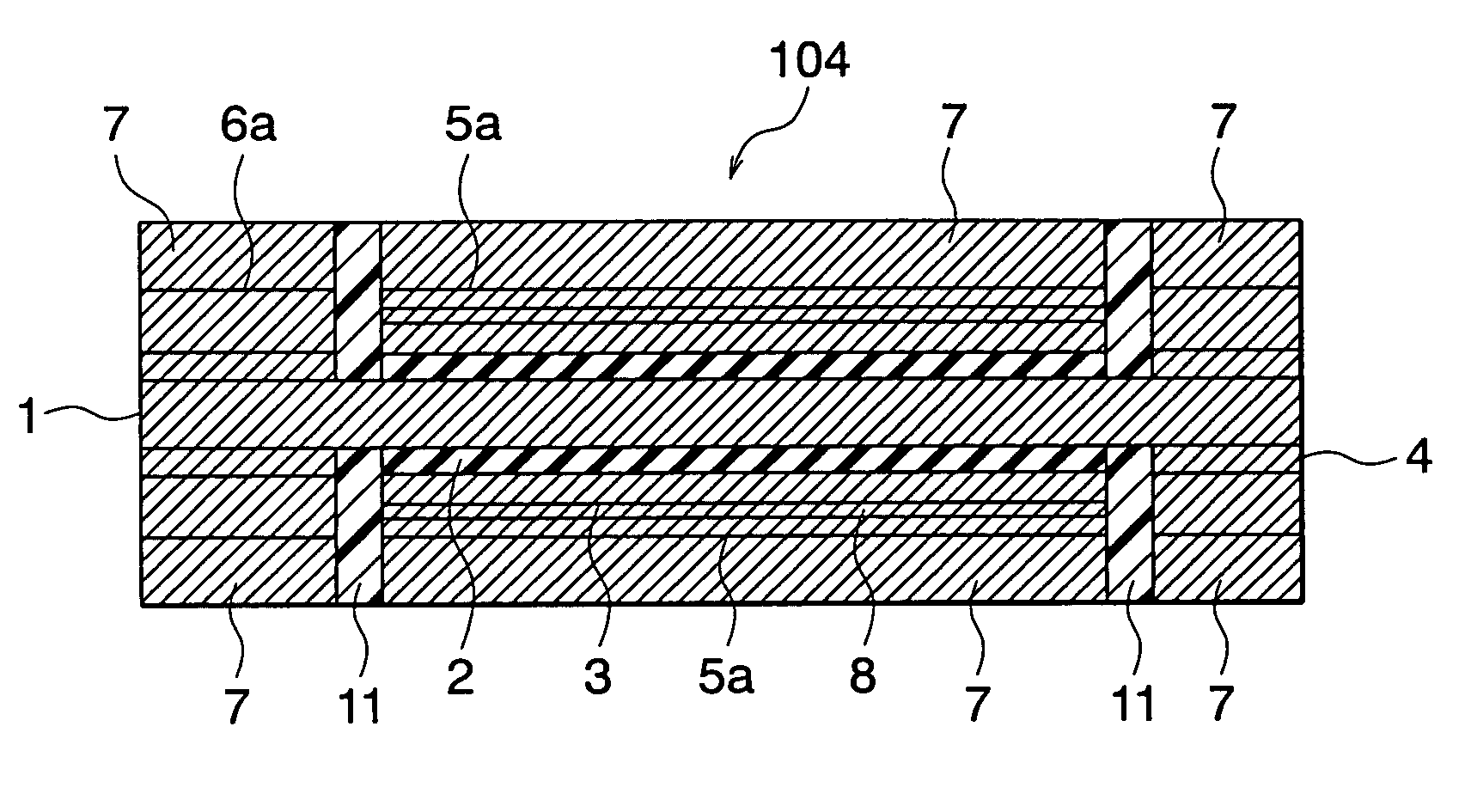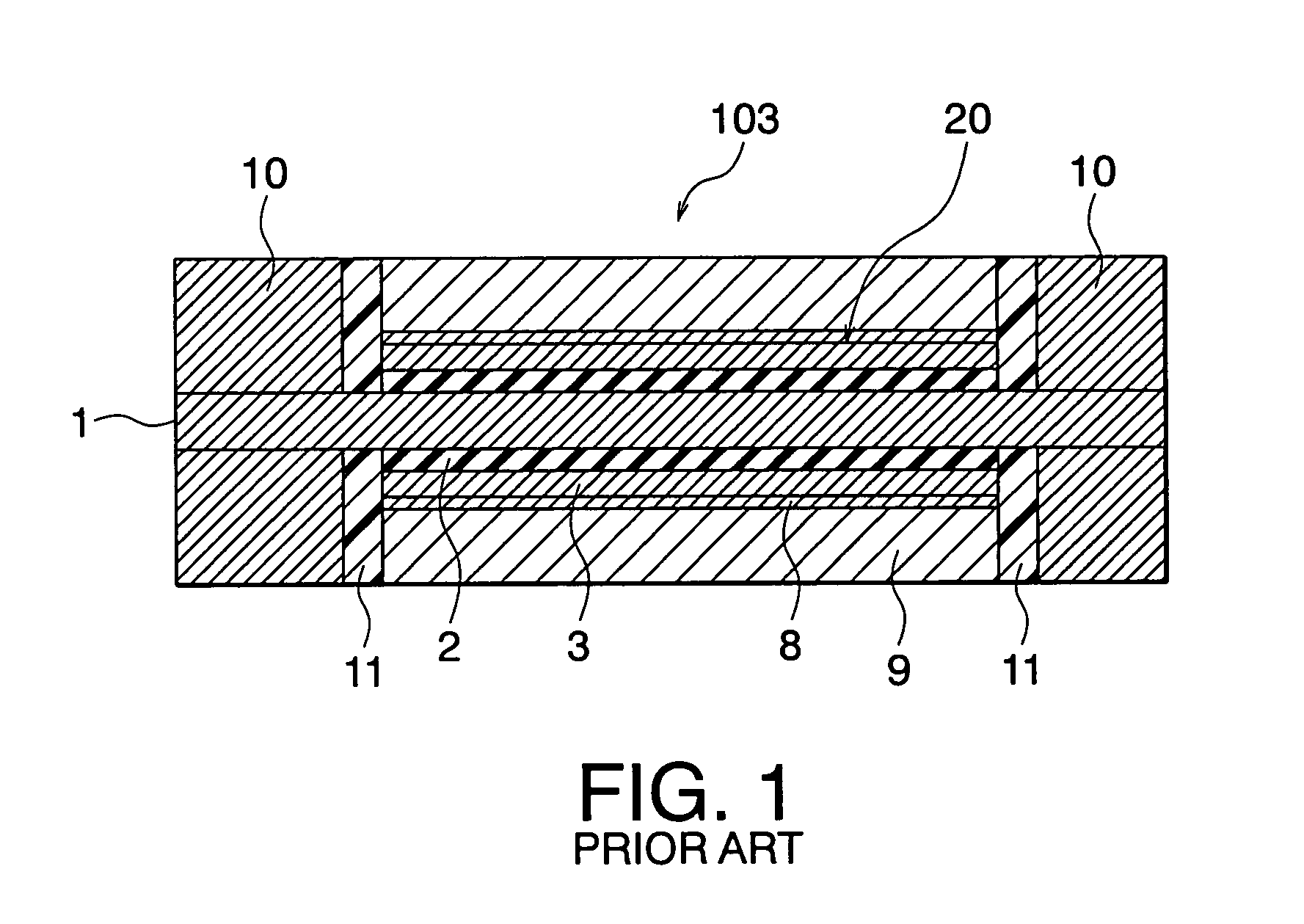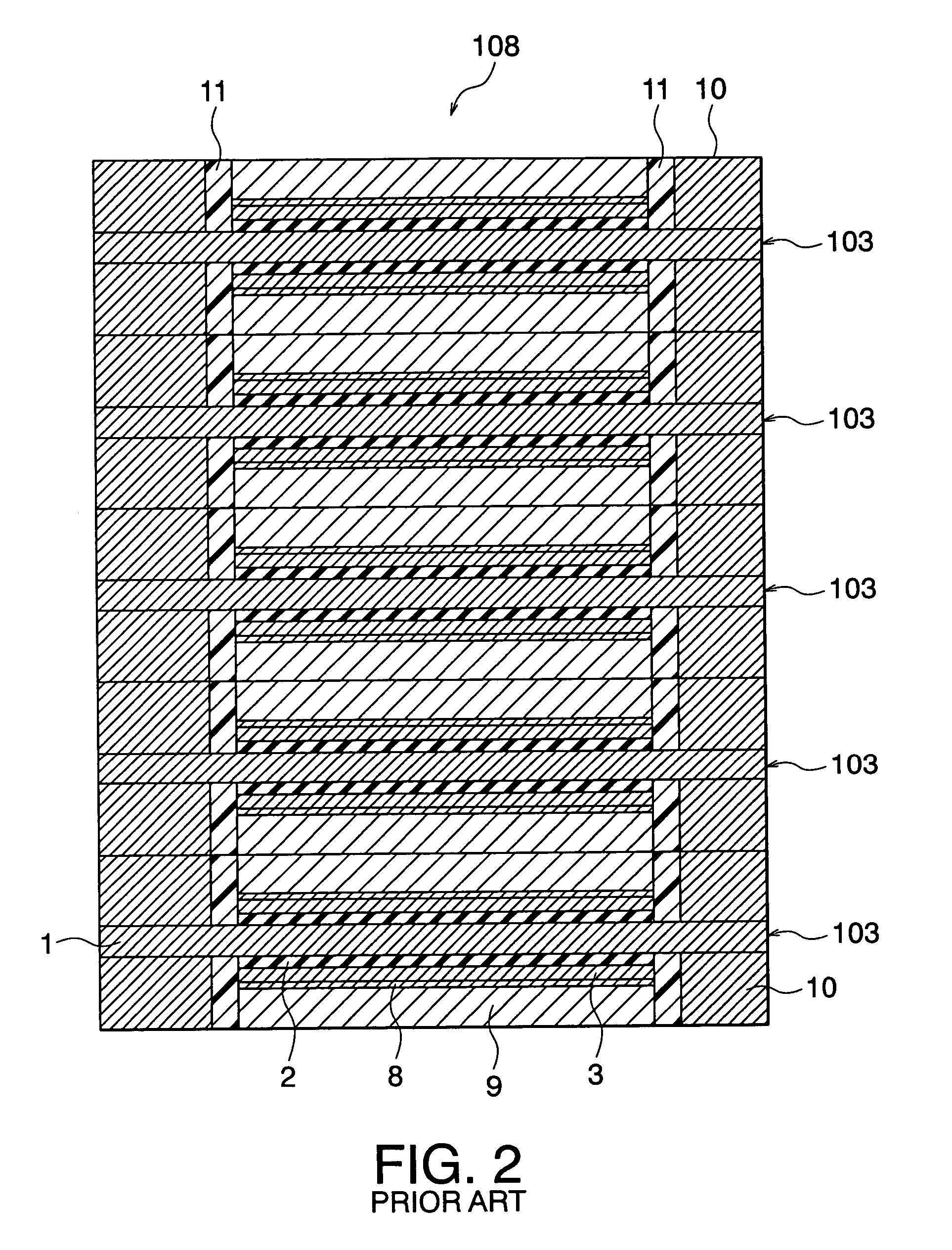Solid electrolytic capacitor, stacked capacitor using the same, and fabrication method thereof
a solid electrolytic capacitor and aluminum technology, applied in the direction of electrolytic capacitors, liquid electrolytic capacitors, stacking capacitors, etc., can solve the problems of increasing capacity, reducing impedance, and increasing size, and it is difficult to obtain a capacitor having a sufficiently low impedance in a high frequency region, and achieves low impedance and small space. , the effect of large capacity
- Summary
- Abstract
- Description
- Claims
- Application Information
AI Technical Summary
Benefits of technology
Problems solved by technology
Method used
Image
Examples
example 1
[0049]In a basic element 20 shown in FIG. 5, a conductive polymer layer 3 in the form of a conductive polymer film is formed on a dielectric oxide film 2 of an aluminum foil 1 formed with the dielectric oxide film 2 by surface roughening. Symbol 11 denotes a resist for dividing into an anode portion and a cathode portion. In the basic element 20 after the formation of the conductive polymer film, a copper plating layer was directly formed as a first metal plating layer (I) 5a on the cathode portion conductive polymer layer 3 as shown in FIG. 3. Alternatively, after forming a graphite layer on the cathode portion conductive polymer layer 3, a copper plating layer was formed as a first metal plating layer (I) 5a. Then, the respective samples were each applied, as a pretreatment for anode portion copper plating, with a zincate treatment, with gold deposition, platinum deposition, or carbon deposition to form an anode deposition film 4, with masking so as not to form the oxide film at t...
example 2
[0052]As shown in FIG. 3, a first metal plating layer (I) 5a on polypyrrole and a second metal plating layer (II) 6a on a metal deposition layer 4 were formed by copper plating, respectively, according to the foregoing copper plating method and third metal plating layers (III) 7 were each formed by a copper-tin alloy plating layer, thereby preparing a solid electrolytic capacitor 101.
[0053]As shown in FIG. 4, a nickel plating layer was formed as a first layer 5a of a first metal plating layer (I) on a basic element 20 and a copper plating layer was formed as a second layer 5b on the first layer 5a, while, likewise, a nickel plating layer was formed as a first layer 6a of a second metal plating layer (II) and a copper plating layer was formed as a second layer 6b on the first layer 6a, and third metal plating layers (III) 7 were each formed by a copper-tin alloy plating layer, thereby preparing a solid electrolytic capacitor 102.
[0054]As shown in FIG. 6, a graphite layer 8 was formed...
example 3
[0057]After forming a plurality of solid electrolytic capacitors 101 on the frames shown in FIG. 8, the frames were stacked together and then copper-tin alloy plating layers 7 as third metal plating layers (III) 7 were heated and melted at 230° C. to 350° C. so as to be bonded together, thereby producing five-layer stacked capacitors 105 of this invention.
[0058]Further, the frames shown in FIG. 9 were stacked together at predetermined positions, then solid electrolytic capacitors 107 were joined together by the use of conductive paste and then cut at predetermined portions, thereby producing five-layer stacked capacitors 106.
[0059]For comparison, there was produced a conventional five-layer stacked capacitor 108 using graphite, silver paste, and terminal plates as shown in FIG. 2.
[0060]FIG. 10 shows frequency-impedance characteristics of the stacked capacitors 105, 106, and 108, respectively.
[0061]As shown in FIG. 10, it is understood that the impedance of the stacked capacitor 105 ...
PUM
| Property | Measurement | Unit |
|---|---|---|
| melting point | aaaaa | aaaaa |
| resistivity | aaaaa | aaaaa |
| resistivity | aaaaa | aaaaa |
Abstract
Description
Claims
Application Information
 Login to View More
Login to View More - R&D Engineer
- R&D Manager
- IP Professional
- Industry Leading Data Capabilities
- Powerful AI technology
- Patent DNA Extraction
Browse by: Latest US Patents, China's latest patents, Technical Efficacy Thesaurus, Application Domain, Technology Topic, Popular Technical Reports.
© 2024 PatSnap. All rights reserved.Legal|Privacy policy|Modern Slavery Act Transparency Statement|Sitemap|About US| Contact US: help@patsnap.com










